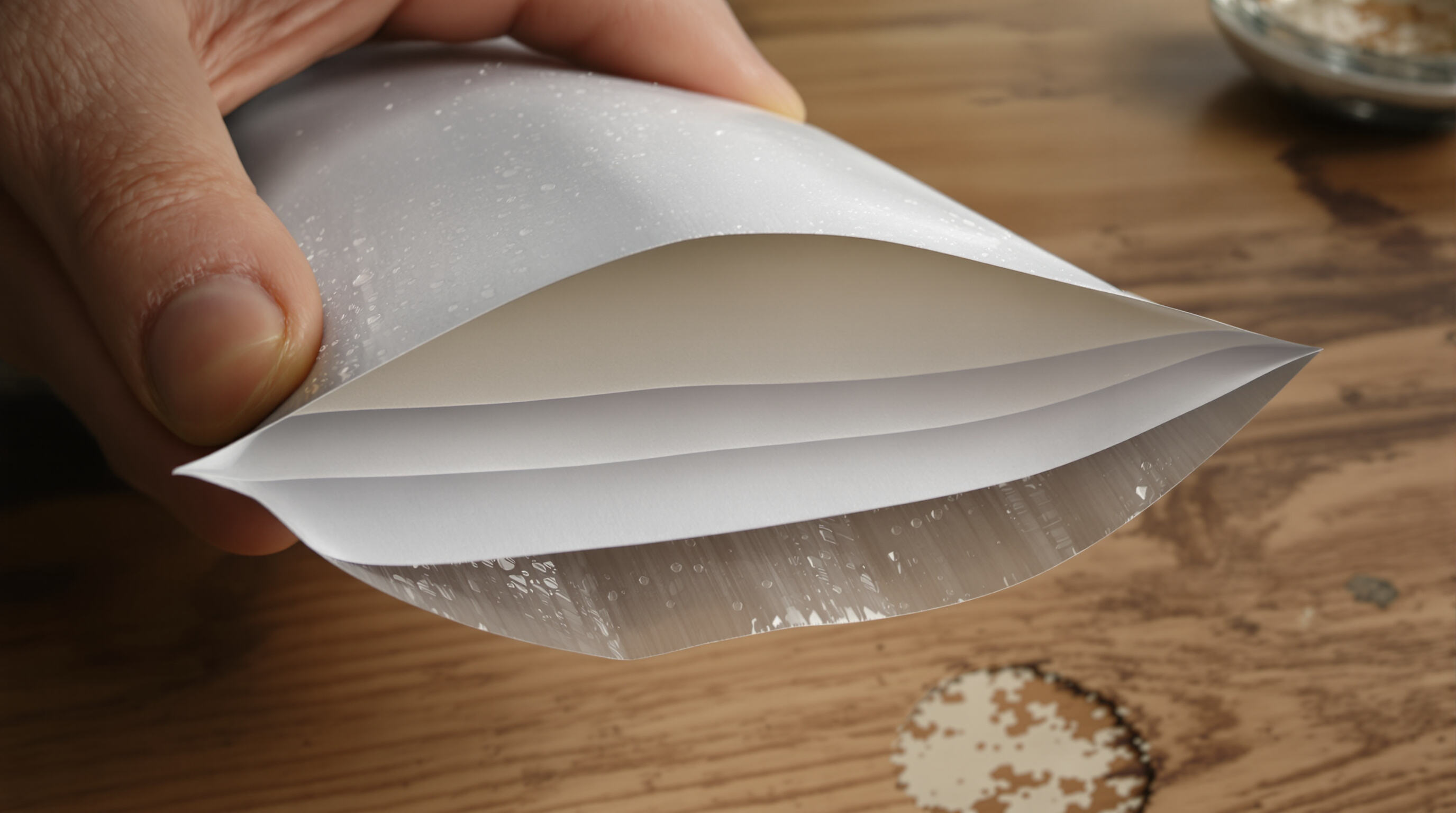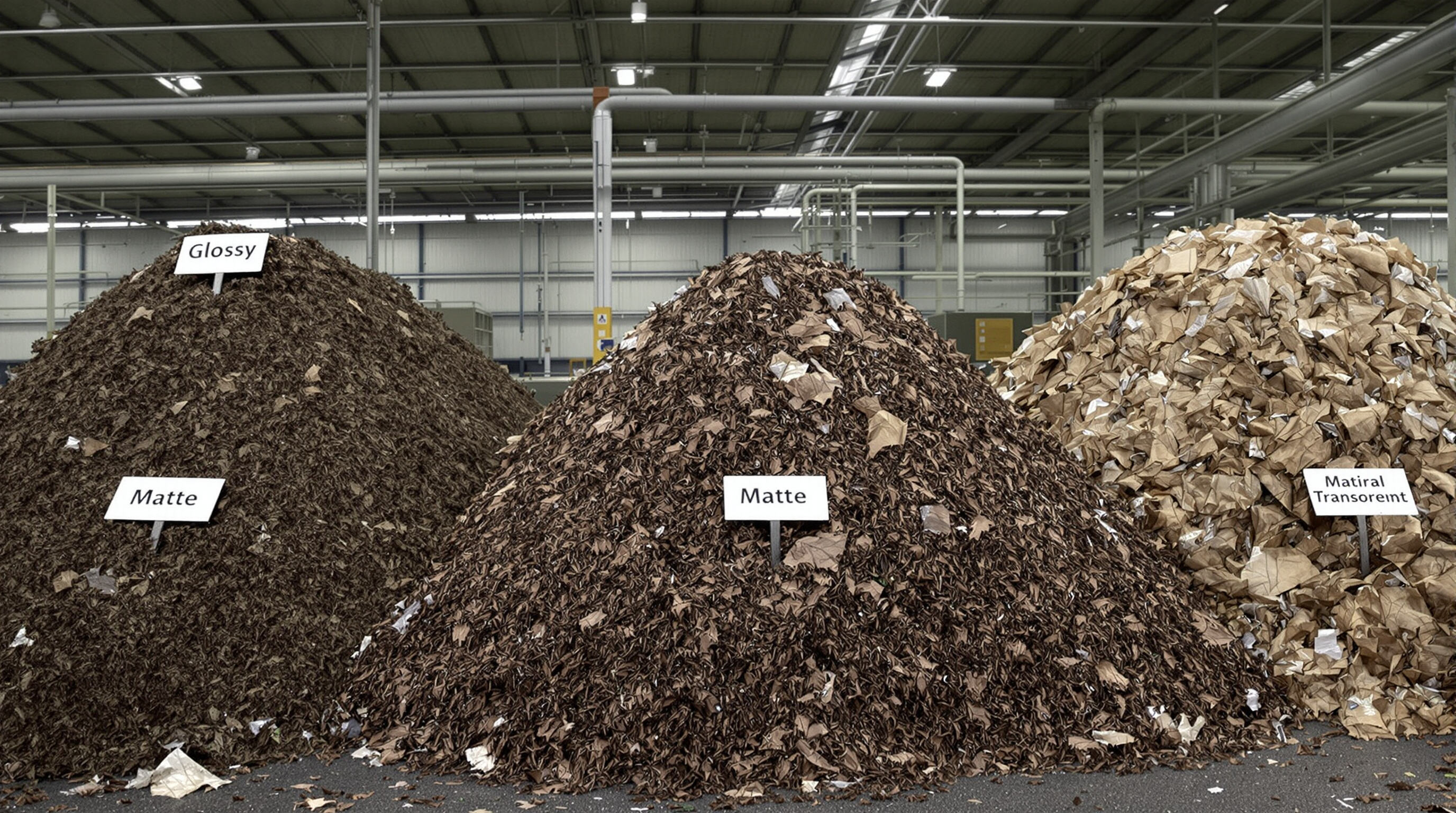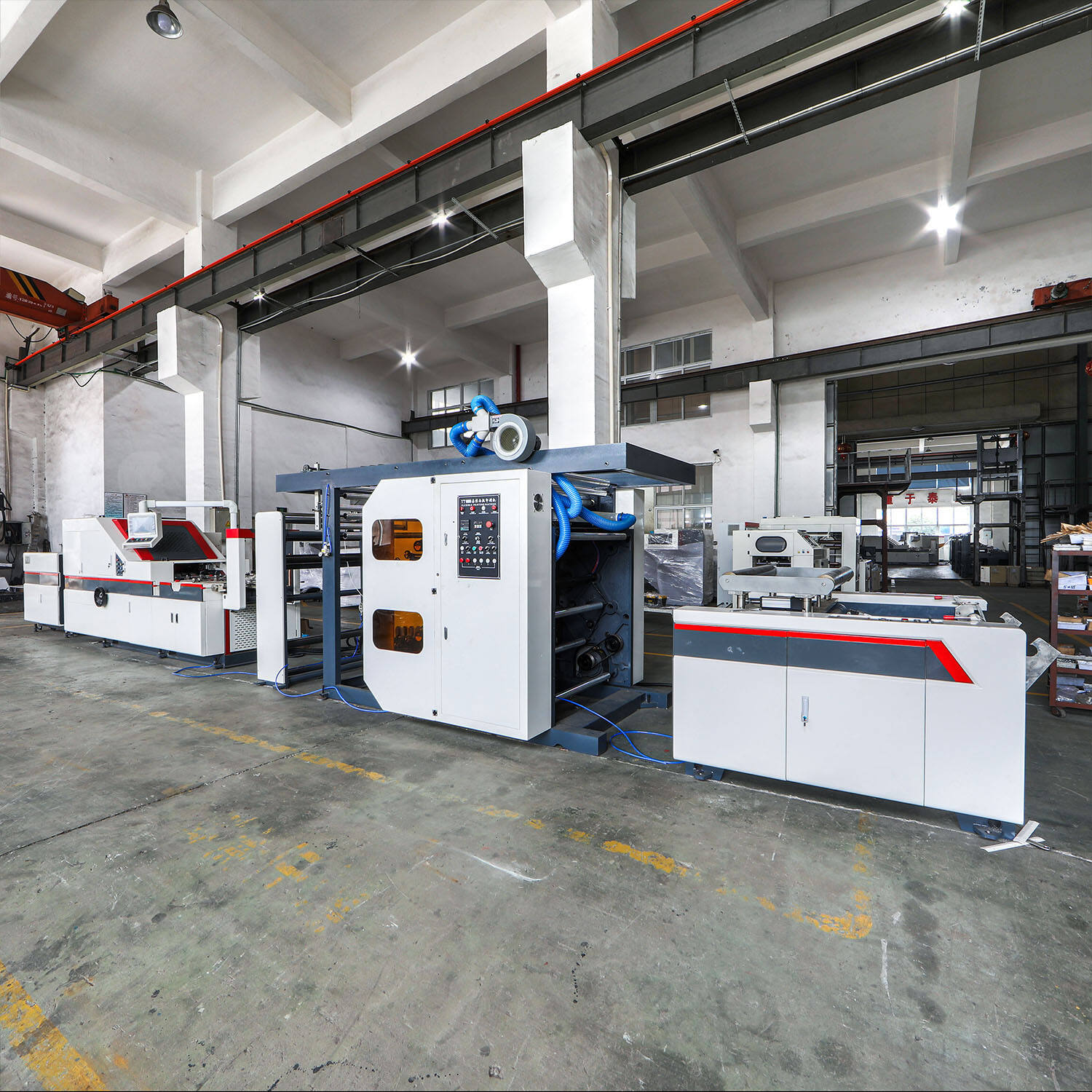Why Lamination Significantly Boosts Paper Bag Durability

Understanding lamination in paper bag production
The lamination process basically means sticking a thin protective layer, usually made of polyethylene (PE) or sometimes biodegradable stuff like PLA, onto paper during production. What this does is create something called a composite structure that protects the paper underneath from all sorts of environmental issues without making it too stiff or rigid. Regular old paper just can't handle much moisture or rough handling, but when we add these laminated layers, they form a sort of shield against humidity and wear and tear from people grabbing and moving things around. This helps fix some major problems that regular paper bags have been dealing with for years.
Functional benefits: Water, tear, and scratch resistance from lamination
The laminated coating provides triple protection:
- Water resistance prevents swelling and ink bleeding in humid conditions
- Tear resistance increases tensile strength by 30-50% compared to bare paper
- Scratch-resistant surfaces maintain print quality through supply chain handling
These properties enable paper bags to withstand 5-7 lbs of dynamic weight without structural failure, according to packaging stress tests (2024).
Case study: Supermarket reduces bag breakage by 65% after lamination integration
One major grocery store chain across Europe cut down on roughly 12 tons of packaging trash each year after making the switch to those tough laminated paper bags we see nowadays. Strengthening the handles and reinforcing the seams made a big difference too - fewer than one in ten bags now end up splitting at the bottom compared to nearly a quarter before. And customers aren't complaining as much either; reports of torn bags went down around two thirds since they started using these new ones. Of course, this move fits right into the EU's ongoing efforts to reduce plastic waste, but what shoppers really care about is that these bags can still hold four to six bottles without falling apart when heading home from the supermarket.
Data insight: 40% increase in bag durability with laminated construction
Industry lifecycle analyses confirm laminated paper bags withstand 120+ reuse cycles versus 85 cycles for non-laminated versions. The added layer improves abrasion resistance at fold points by 40%, directly extending functional longevity. This durability enhancement makes laminated bags 72% more cost-effective over three-year usage periods despite higher initial material costs.
Integrated Lamination in Paper Bag Making Machines: How It Enhances Efficiency
How inline lamination streamlines the paper bag manufacturing process
Paper bag manufacturing equipment that incorporates lamination technology removes the hassle of separate coating and bonding steps, which typically saves around 25-35% on production time when compared to traditional multi-stage methods. These machines apply heat seal films or eco-friendly coatings right as the bags are being formed, cutting down on both material movement and overall power usage. According to recent market research, manufacturers report savings of approximately 40% on adhesives while still getting strong bonds because the system constantly adjusts pressure levels and temperatures during operation. This kind of efficiency makes sense for companies looking to streamline their operations without compromising quality standards.
Comparative performance: Laminating vs. non-laminating paper bag machines
Packaging machines that can handle lamination typically produce about 18 to 22 percent more output compared to regular machines, hitting around 1,800 to 2,200 bags per hour based on industry standards. The upfront price tag does go up by roughly 15 to 20 percent though, but companies making laminated bags tend to see their investment pay off quicker because there are fewer problems after production. These laminated products just don't fail as often when tested under weight stress conditions, with failure rates dropping down by about sixty percent. Looking at what retailers are actually doing shows something interesting too. Laminated paper bags last anywhere from four to seven times longer before they start showing signs of wear and tear, which means businesses spend less money replacing them over time.
Precision control in adhesive lamination and modern machine automation
Modern paper bag manufacturing equipment now features laser guided adhesive applicators which keep the coating accurate to about half a millimeter, something really important when it comes to getting good lamination results every time. Systems connected through the internet can tweak the viscosity automatically depending on how wet or dry the materials are, which helps avoid those annoying delamination problems we all hate. Some pretty cool new tech has hit the market recently too, like AI systems that spot weak spots in the bonding process while things are still being made. These systems reportedly catch most defects before they become big issues, though actual numbers vary between manufacturers. Most plants report around 99% success rate with proper lamination these days based on what industry insiders have been saying lately.
Balancing Durability and Sustainability in Laminated Paper Bag Production
Eco-Friendly Demand Driving Innovation in Sustainable Laminated Packaging
The paper bag industry is stuck between wanting strong bags and dealing with all these environmental worries. Many big producers are turning to something called PLA film made from corn starch instead of regular plastic. These plant based films hold up just fine against normal plastic but will break down completely after about twelve weeks if they end up in an industrial composter. Another good option for companies looking to go green is water based coatings. They actually work better when it comes to recycling since around ninety percent of the material gets recovered back into pulp compared to standard plastic coatings. This makes sense for businesses too because most stores care about their environmental impact these days. Statistics show that nearly eight out of ten retailers want packaging solutions that comply with those EPR rules where companies take responsibility for what happens to their products after sale.
Biodegradability Debate: Does Lamination Compromise Compostability?

While traditional plastic lamination creates recycling conflicts, advanced materials maintain compostability without sacrificing functionality. A 2023 Ellen MacArthur Foundation study found paper bags with starch-based barriers achieve full biodegradation in 6 months, versus 18+ months for petroleum-laminated equivalents. However, performance varies by material:
| Material Type | Key Benefit | Industrial Compostability |
|---|---|---|
| PLA Films | Heat-sealable barrier | 8-12 weeks |
| Cellulose Coatings | Moisture resistance | 4-6 months |
| Starch Blends | Low-cost alternative | 3-4 months |
Advances in Biodegradable Films and Recyclable Lamination Materials
Recent advances in materials have made it possible for paper bags to hold about 15 pounds of stuff without tearing, all while still being able to go into recycling bins. That's actually around 40 percent better than what was available back in 2020. The secret lies in these new enzyme-based adhesives that let the laminated layers break down when the paper goes through the pulping process, so the fibers stay intact enough for another round of use. Factory floor reports show something pretty impressive too: companies are seeing roughly 65% less waste overall because of these precision coating systems. These machines can lay down protective coatings with such fine control that they measure things in microns rather than millimeters, which makes a big difference in how much gets wasted during production runs.
Balancing Strength and Environmental Responsibility in Modern Paper Bags
Modern paper bag production equipment now comes equipped with built-in lamination capabilities that strike just the right balance between quality and efficiency. The machines use sensors to tweak adhesive settings and coating levels depending on how thick or thin the paper is. This keeps bags strong enough to handle rough handling (they need at least 18 Newtons per square meter tear strength) but still saves about 30% on materials compared to older methods. Manufacturers can now pass both the ASTM D5635-18 test for durability and get their compostability certified under EN 13432 all at once. So companies don't have to choose between being green and making reliable products anymore.
Market Growth and Regulatory Drivers for Paper Bag Making Machines
Global plastic bans accelerating demand for durable paper bag solutions
More than 130 nations around the world have put limits on plastic bags since 2022, which has led to a huge market gap worth approximately $12.3 billion for alternatives like laminated paper bags according to data from the United Nations Environment Programme released last year. Both California's SB 54 legislation and Europe's broader Single Use Plastics Directive require businesses to switch to either compostable materials or ones that can be properly recycled. Recent studies indicate that roughly three out of four American retail stores ramped up their use of paper bags after these new rules went into effect, as they tried to stay compliant while meeting customer expectations for greener options.
Paper bag market outlook: 5.8% CAGR projected through 2030
The paper bag making machine sector will grow at 5.8% CAGR through 2030 as manufacturers upgrade equipment for laminated designs. A 2025 industry analysis revealed 63% of packaging converters now prioritize machines with integrated lamination features, driven by brands needing >40% stronger bags for e-commerce logistics.
Retail and food service sectors adopting laminated paper bags at scale
Quick-service restaurants using laminated paper bags report 58% fewer product damage claims versus traditional packaging. Grocery chains like Kroger and Carrefour have standardized 75-100gsm laminated bags, with testing showing 3.2x greater weight capacity compared to uncoated alternatives.
FAQ
- What is lamination in paper bags? Lamination in paper bags refers to applying a thin protective layer to enhance durability, water resistance, and tear strength.
- How does lamination improve paper bag durability? Lamination increases resistance to water, scratching, and tearing, making paper bags withstand regular wear and loads without structural damage.
- Are laminated paper bags environmentally friendly? Laminated paper bags can be eco-friendly if made with biodegradable materials like PLA films and water-based coatings, enhancing their compostability and recyclability.
- What impact does lamination have on the manufacturing process? Integrated lamination in manufacturing reduces production time and material waste by streamlining the coating and bonding steps.
- Why are laminated paper bags becoming popular? With global plastic bans, laminated paper bags offer a durable, sustainable alternative that complies with environmental regulations.
Table of Contents
- Why Lamination Significantly Boosts Paper Bag Durability
- Integrated Lamination in Paper Bag Making Machines: How It Enhances Efficiency
- Balancing Durability and Sustainability in Laminated Paper Bag Production
- Eco-Friendly Demand Driving Innovation in Sustainable Laminated Packaging
- Biodegradability Debate: Does Lamination Compromise Compostability?
- Advances in Biodegradable Films and Recyclable Lamination Materials
- Balancing Strength and Environmental Responsibility in Modern Paper Bags
- Market Growth and Regulatory Drivers for Paper Bag Making Machines
- FAQ

